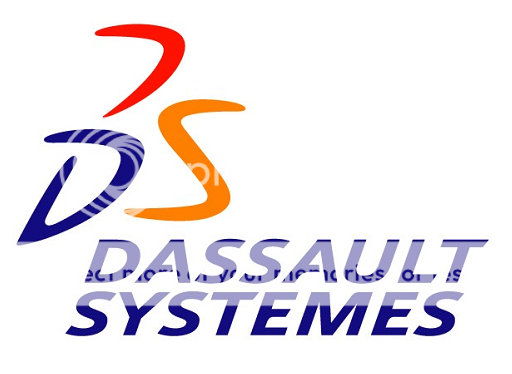
Integrated portfolio supports seamless industry processes: CATIA V5.17 strengthens the end-to-end electrical process with the best 3D harness design and flattening for the automotive and aerospace industries. The release further increases CATIA machining programming and simulation efficiency to significantly reduce overall manufacturing process time.
The end-to-end collaborative composites design process benefits from powerful instant collaboration features that promote and ease concurrent composites design.
High performance design with knowledge capture and reuse encourages Innovation: CATIA V5.17 further facilitates design innovation with core styling capabilities that enables designers to explore product ideas more rapidly while permitting last-minute styling modifications.
CATIA V5.17 accelerates adoption of breakthrough functional modeling for the automotive powertrain process.
Breakthrough technologies dramatically accelerates ROI: CATIA V5.17 delivers a unique auto-filleting capability that enables automotive powertrain and chassis designers to reduce the time required to fillet complex parts from hours or days to minutes.
CATIA V5.17 empowers the unique 2D/3D associative approach for conceptual design and further promotes 3D as the master representation for 3D tolerance and annotations definition, management and presentation in a familiar drawing layout embedded in the 3D.
V5 PLM (integration) maximizes Collaboration: CATIA V5R17 with ENOVIA VPM Navigator boosts relational design by providing ease of use for designers to work concurrently on different part versions and to manage advance product effectivity and configuration.
The new SMARTEAM-CATIA Web Integration product further consolidates the V5 entry-level PLM solution as a collaborative browser-based environment for small- and medium-sized businesses by enabling enterprise users and authorized suppliers to manage CATIA product information easily and securely via browser.
Get an efficient collaboration with a richer 3D XML format throughout the product development cycle. Annotation browsing or Finite Element Analysis output add to the ease of the reuse and share of 3D outside the design office.
Easy, Open and Scalable architecture extends the reach of PLM: Key PLM market players are adopting V5 architecture, xx additional partners V5 applications have been launched since V5R16 extending the process coverage of V5 solutions, with highly specialized applications to cover many disciplines such as sheetmetal parts design to manufacturing or DMU.
Product Positioning
CATIA V5 is the leading product development solution for all manufacturing organizations, from OEMs, through their supply chains, to small independent producers. The range of CATIA V5 capabilities allows it to be applied in a wide variety of industries, such as aerospace, automotive, industrial machinery, electrical, electronics, shipbuilding, plant design, and consumer goods, including design for such diverse products as jewelry and clothing.
CATIA V5 is the only solution capable of addressing the complete product development process, from product concept specification through product-in-service, in a fully integrated and associative manner. Based on an open, scalable architecture, it facilitates true collaborative engineering across the multidisciplinary extended enterprise, including style and form design, mechanical design and equipment and systems engineering, managing digital mock-ups, machining, analysis, and simulation. By enabling enterprises to reuse product design knowledge and accelerate development cycles, CATIA V5 helps companies speed-up their responses to market needs.
In conjunction with ENOVIA and SMARTEAM for lifecycle management and decision support and DELMIA for manufacturing engineering, CATIA V5 is a key component of collaborative PLM.
Much beyond pure CAD software packages, which provide geometry modeling features for design-centric companies, CATIA V5 delivers the keys to PLM for process-centric companies:
1. Product to market. CATIA is about product creation. From the earliest product concept to production tooling, its concurrent engineering and design-in-context capabilities create value by enabling companies to create products and bring them to the market.
2. Time to market. The unequalled process coverage of CATIA, combined with the native associativity among all of its applications, gives CATIA customers the means to shorten the time to market.
3. Right to market. CATIA's integrated analysis, simulation, synthesis, and optimization applications provide product engineering validation at each design step to ensure product quality and market acceptance.
4. Lead the market. CATIA's advanced capabilities for collaborative engineering, knowledge capture, and re-use boost innovation and help to lead the market.
The three CATIA V5 platforms (P1, P2, and P3) make it the most scalable solution for product creation. CATIA V5 P1 users benefit from PLM productivity in an affordable way with the security of potential growth. They can conduct associative product engineering based on CATIA V5 product design-in-context, product knowledge reuse, end-to-end associativity, product validation, and collaborative change management capabilities.
CATIA V5 P2 users can optimize their PLM processes through knowledge integration, process accelerators, and customized tools. They can drive generative product engineering based on the largest application portfolio. They can perform "design-to-target," extensively capture and re-use knowledge, and stimulate collaborative innovation.
CATIA V5 P3 users access the highest productivity for specific advanced processes with focused solutions. They can lead expert engineering and advanced innovation, relying on unique and very specialized applications that integrate product and process expertise.
The CATIA V5 world is fully scalable because the P1, P2 and P3 platforms operate on the same data model, methodology, and management schemes. By enabling users to install P2 applications on top of P1 seats and by standardizing graphical user interfaces across platforms, P1 users can immediately do collaborative design of their extended enterprise with P2 users and later grow with P2 and P3 platforms as their business grows.
Download